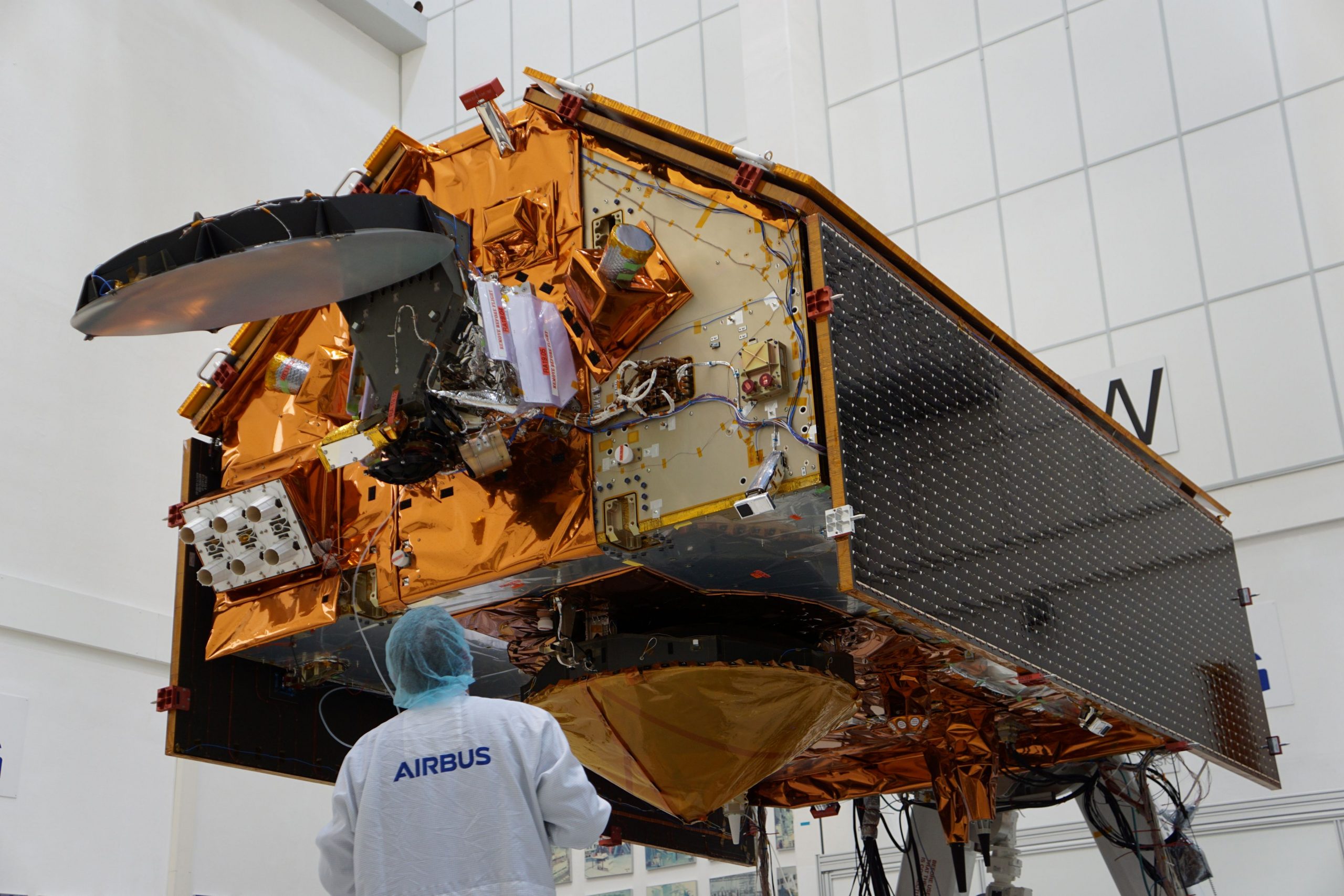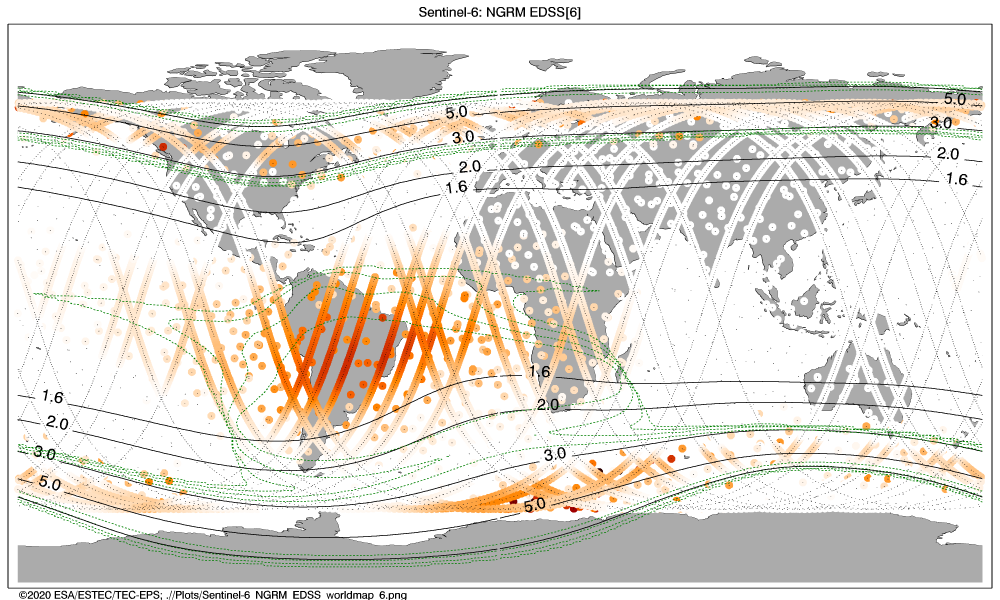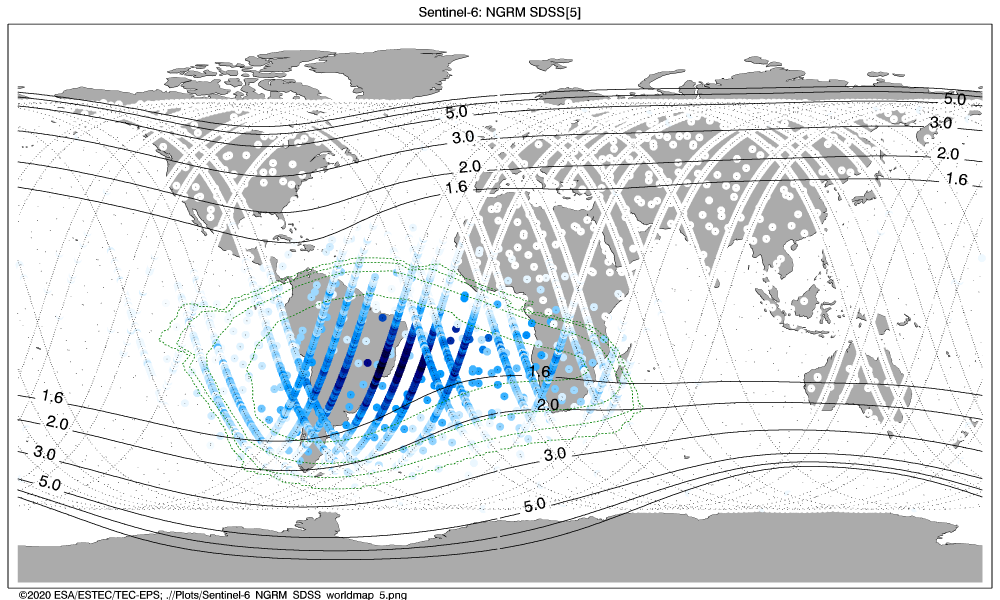Following the successful launch of the Copernicus Sentinel-6 Michael Freilich spacecraft on the 21st November, 2020, the first radiation environment data from the onboard Next Generation Radiation Monitor (NGRM) have been received. This instrument data compliments that of the EDRS-C/NGRM in geostationary orbit. The NGRM was conceived as a follow-on to the highly successful ESA Standard Radiation Monitor (SREM), which has been flown on a number of ESA missions since 2000.
Airbus space engineers testing the Copernicus Sentinel-6A satellite at the Space Test Centre of Industrieanlagen-Betriebsgesellschaft mbH (IABG) in Ottobrunn – near Munich – to prove its readiness for space.
The NGRM unit can be seen, uncovered by MLI, on the right side of the facing panel.
Image ©Airbus Space
The attached plots show count rates from the two NGRM sensor heads, EDSS (~300 keV, left) and SDSS (~50 MeV, right), for energetic electron and proton detection, respectively. The intensity of the colour represents the count rate intensity. Overlaid are the contour plots from the AP-8 MIN and AE-8 MAX trapped particle belt models (dashed contours), and magnetospheric L-Shell contour lines. The outer trapped electron belt and South Atlantic Anomaly (SAA) are clearly seen.
Following these first radiation data from the NGRM, the upcoming data analysis efforts will focus on calibration of the raw radiation counts into environmental proton and electron fluxes and spectra.
Beyond this second flight of the NGRM on Sentinel-6 Michael Freilich, follow on units are planned to be flown on a number of spacecraft as part of the MetOp-SG and MTG programmes.



